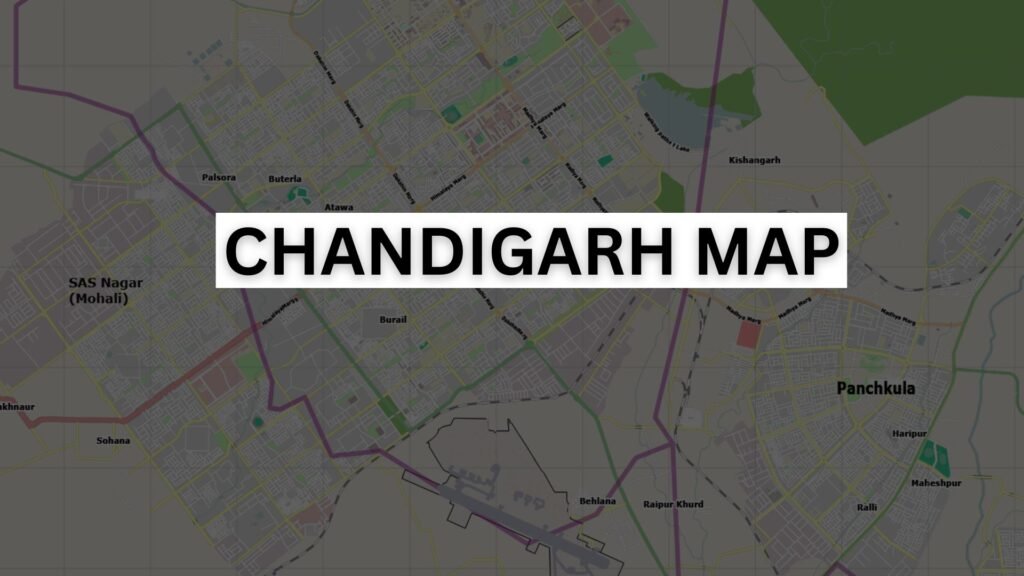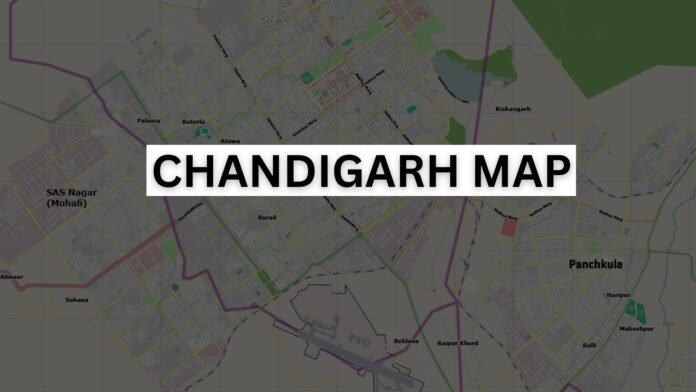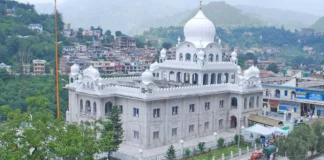
Chandigarh Map: When you are looking at the map of Chandigarh, it’s not just roads and sectors, but you are looking at the vision of a modern India, beautifully and purposefully drawn out. Every line, intersection, and open space on the map was purposefully designed to embody order, functionality, and beauty. Conceived by the legendary architect Le Corbusier, Chandigarh stands as a living example of thoughtful urban planning, where the layout is not just practical but symbolic of progress, harmony, and innovation.
An Interpretive Chandigarh Map
Did you know that Chandigarh was a planned city, in contrast to many others that developed naturally over centuries? That genius is reflected in its map. The city’s layout, which was created in the 1950s by renowned architect Le Corbusier and his team, is a work of architectural art. It is orderly, symmetrical, and divided into independent areas known as “sectors of life”.
The map’s sectors are thoughtfully organized with:
- Household areas
- Parks and green areas
- Retail Establishments
- Educational establishments
- Areas for recreation and health
Now, before we explore each sector in detail, it’s important to understand what makes Chandigarh unique in its sector-based planning. Unlike most Indian cities, It was a dream built on a map. Designed by world-renowned architect Le Corbusier, the city is divided into well-planned, self-contained sectors, each acting like a “mini-city” of its own.
| Feature | Description |
| Size | Roughly 800m x 1200m |
| Infrastructure | Residential areas, markets, schools, parks, and essential services |
| Connectivity | Wide roads and green belts connect sectors |
| Design Philosophy | Focus on walkability, accessibility, and urban balance |
So now, let’s take a deeper look, sector by sector, starting from the top — not just to understand addresses and maps, but to uncover the soul of Chandigarh.
Sectors 1 to 3 Chandigarh Map
- In sectors 1 to 3, it’s basically a home to the Capitol Complex, the High Court, and the Secretariat.
- Which symbolises governance, power, and Le Corbusier’s architectural legacy.
- The place is grand, quiet, and mostly administrative.
Sectors 10, 11 and 14 CMap
- In Sectors 10, 11, and 14, there are some museums, art galleries, and top colleges like Panjab University & PEC.
- The place is intellectual, calm, and inspiring for students and creative people.
Sectors 17, 22, 35, 34 Chandigarh map
- Sectors 17, 22, 35 and 34, bustling with shopping plazas, markets, cafes, and businesses.
- The city’s energy centres are perfect for hanging out, working, and retail therapy.
Sectors 7–9, 15–19, 21–30 Chandigarh map
- In Sectors 7–9, 15–19, and 21–30, there are beautiful bungalows, tree-lined streets, and local parks.
- This place is peaceful and ideal for families; these sectors represent Chandigarh’s timeless charm.
Sectors 31–38, 44–46 Chandigarh Map
- Sectors 31–38 and 44–46 are a mix of independent homes, flats, and small markets.
- These sectors are functional and family-friendly, with all basic amenities nearby.
Sectors 40-56
- Sectors 40–56 are mostly popular with young professionals and working families.
- There you can find flats, PGs, and society housing at more affordable rates.
- This area is rapidly developing, with improving civic infrastructure.
Sectors 56-63
- Sectors 56–63 are located near Mohali and Zirakpur; these are the city’s expanding frontiers.
- These are known for new apartment complexes, investment value, and peaceful surroundings.
As we journey through the sectors of Chandigarh, it becomes clear that this isn’t just a city; it’s a living blueprint of vision, functionality, and harmony. Every road, park, plaza, and home has been placed with intention. Chandigarh life stands as a bold contrast to the organic sprawl of most Indian cities—a space where modernism meets tradition and where community thrives alongside calmness.
What makes Chandigarh truly exceptional is how it balances life’s many needs. In Chandigarh, the map is not just a guide—it’s a narrative. A narrative of post-independence hope, of design driven by people’s well-being, of progress grounded in nature and order. It reminds us that a city can be more than just buildings and roads—it can be a vision brought to life.





